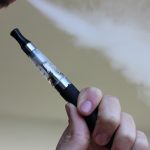A chemistry lab is incomplete without glassware. It is the very essence of a laboratory and comes in an extensive range. Some common kinds of glassware would include test tubes, beakers, pipettes, and flasks.
Beakers
A beaker is an integral part of chemistry lab glassware. Beakers are available in various sizes and are simple containers that hold both reagents, as well as, samples. They are used to measure volumes of liquid. They are not necessarily precise as some of them do not even have the volumetric readings. A 250 ml beaker would be holding around 250 ml plus minus 25 ml.
Beakers have a flat bottom so they could easily be used on flat surfaces such as hot plates and lab benches. Every beaker would be having a spout to facilitate easy pouring. Thanks to the wide opening, adding substances to the beaker while an experiment is on, could become really easy. Beakers are used by researchers, students, lab technicians and others for mixing, as well as, transferring liquids.
Test Tubes
Test tubes are narrow but cylindrical with nicely rounded bottoms. They are used for holding small quantities of samples. They are not used for measuring accurate volumes. Test tubes are quite cheap in comparison to other laboratory glassware. Test tubes could be heated directly over a flame and are usually, made of borosilicate glass. However, some of them may be made of other less robust glass or even plastic at times. Test tubes generally are not supposed to have any volume rankings. Their prices may differ in terms of their sizes. Test tubes have lips or smooth openings.
Pipettes
Pipets are used in the chemistry laboratory for measuring and transferring small volume. There are several types of pipettes that may include reusable, disposable, manual and also, autoclavable. Pipettes are effective in delivering minute volumes of liquid repeatedly and reliably. Unmarked pipettes would be delivering liquids drop-wise. There are some other types of pipettes that are effective in delivering precise volumes. Micropipettes are used for delivering all liquids and fluids with microliter accuracy. Pipettes are usually made of glass. However, today some plastic pipettes are also available in the market. This kind of plastic pipettes must not be exposed to extreme temperature or an open flame as the pipette could be deformed due to heat. So accurate volume measurement could be compromised.
Florence Flask
A Florence flask is also, referred to as the boiling flask. It is a thick-walled and a round-bottom container made of Borosilicate glass and is adept at withstanding temperature fluctuations. A clamp could be used around the slender neck of the flask so that the delicate glassware is held far more securely. Florence Flask may be used not only for heating liquids but sometimes for even accurate volume measurement. However, boiling flasks often may not have the markings for measuring volume.
Conclusion
Glassware is used every day in numerous experiments and research work. You must clean your lab glassware regularly and look for any degeneration so that timely replacements could be done to prevent hazards.







